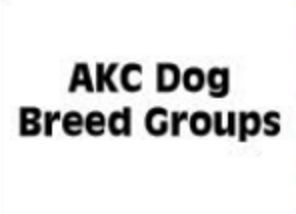
It might surprise you to learn that one of the most frequent questions we’re asked privately has to do with the logic behind the grouping of dog breeds. People outside the dog fancy (a quaint, if archaic term referring to the appreciation, promotion, ownership or breeding of dogs in the world of showing and competitions) have found this perplexing, and we can’t speak to how the FCI or other countries organize their breeds, but we think we might be able to shed a little light on how the AKC does it.
Each AKC registered breed and variety is assigned to one of seven group, each group representing characteristics and functions for which the breeds were originally.
As of the time of this writing, all but three of the terrier breeds recognized by the AKC evolved in the British Isles. Topography has typically determined each breed’s duties, and most have to do with these tenacious dogs hunting varmints and vermin.
Working breeds are also dogs with purpose, and while their uses and phenotypes vary, these are intelligent dogs that typically guard hearth and home, lives and livestock, serve as police and military dogs, and guide their owners as service and guide dogs.
The Hound group was originally classified as sporting dogs because of their function as hunters. These breeds have a great variety in appearance, from size and shape to coat. Most were created to hunt alongside, if not independently, of their humans, and did do in the company of horses or owners on foot. These are, by and large,sight and scent hounds.
The Herding Group is easy for most of us to understand: Dogs who possess a natural instinct to gather and move animals have long been used by people on farms and ranches shepherd their livestock from one place to another.
For generations and hundreds of years, we have made friends with our dogs, and the smaller they are, the more portable they are. Whether they were kept in a wide sleeve, held on a lap, or allowed on the bed for warmth and companionship, toy breeds are ideal for anyone for whom space and circumstances is a consideration.
We can thank the invention of the gun for the development of gun dogs, or, as they’re called by the AKC, the sporting dogs. These are the dogs that perform at the behest of the hunter by pointing, setting, flushing, marking, or retrieving game, be it dead or wounded.
Of all the AKC groups, perhaps the most misunderstood is the Non-Sporting group. The AKC originally registered dogs as either Sporting or Non-Sporting, but eventually, terriers and hounds split from the Sporting Group, and the Toys and Working dogs were split off from Non-Sporting, with the Herding Group eventually splitting from Working. Today, the Non-Sporting Group is literally every breed that is left, resulting in a wide variety of sizes, shapes, hair, function and history. That said, we’ve also heard the group described as made up of dogs whose original job no longer exists.
We’re curious. Do you feel your dog is currently in the right group?
Image from the AKC website with permission
